The Conjuring Universe – Religion, Horror, and Annabelle: Creation
The films of the Conjuring universe are grounded deep in religion. Christian communities have adopted them, calling them ‘first class faith films’ that highlight ‘spiritually heavy subject matter’ 1 and have ‘God’s power on display’. 2 Viewers have gone so far as to say that The Conjuring nears ‘Gospel territory’, and that ‘there hasn’t been a better faith film’ 3 since its release in 2013.
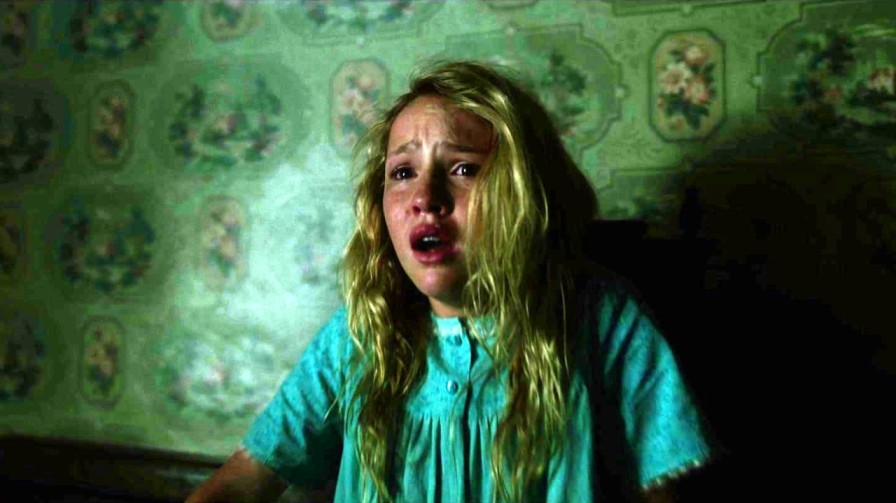
An exceptional reception. But are the Conjuring movies truly ‘faith films’, as these reviews would have you believe? Or do they simply leverage religion? And is there a difference between the two? Finally, how does David Sandberg’s Annabelle: Creation (the fourth instalment in the series) become a horror film that turns both religion and faith upside down?
Faith, Religion, and the Horror Genre
There is some consensus that scary movies which speak of the supernatural can be of two kinds: religious and secular.
The secular kind is represented by films such as Night of the Living Dead 4 , Village of the Damned 5 – essentially any horror film where the underlying powers aren’t necessarily God and the Devil.
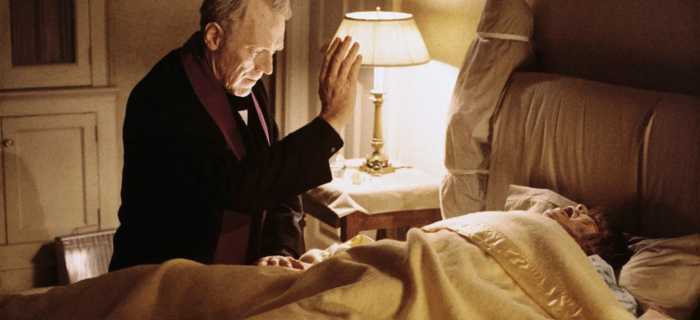
Then you’ve got the religious kind, such as The Exorcist 6 or Fright Night 7. These films have priests, Church sanctioned holy water, almost always Bibles and crucifixes, and usually lots of talk about ‘compelling demons back to Hell’.
There is also a segment of horror which deals with pagan religions and deities – such as The Wicker Man 8 or Sinister 9. But expectedly, most of these treat pagan religiosity as the evil supernatural, and not the religious saviour – so they don’t precisely fall into either of the above categories.
The question here is, is there a line to be drawn between religious horror, and faith horror? The answer lies in the nuance within the religious narrative.
James Wan’s The Conjuring, and Religious Oversimplification
A simple narrative:
In The Conjuring 10, Lorraine advises the Peron family to baptize their children to protect them from the haunting – the Perons are not part of the Church, and this baptism spurred by fear of death is more akin to an empty conversion than an actual finding of faith. If you are to believe Lorraine, a faithless ritual is as effective as one completed in true belief.
A complex narrative:
Contrast this now with Fright Night – when Peter Vincent holds out a crucifix to Jerry Dandridge and commands, ‘Back, spawn of Satan!’, the vampire reaches out, wraps his claws around the cross, and says in what may be the most well known sequence of the film: ‘You have to have faith for this to work on me, Mr Vincent’. This isn’t a refuting of the crucifix’s power: when in turn, Charley holds his crucifix out, it indeed repels the vampire – it’s about your convictions in religious rituals, not the rituals themselves.
A similar complication in the narrative is found in The Exorcist, too – a film in which viewers too often forget that the exorcism itself failed – the experienced and reverent Father Merrin dies, and the demon is only displaced through Karras’ sacrifice of his own life – a much more tangible trade than the holy water and Bible verses thrown around Regan’s room throughout the film.
The exorcism in The Conjuring 2 12 has much more drama. Ed holds Janet Hodgson (like Regan, the possessed daughter of a single mother) in his arms, precariously dangling out of a window – Lorraine is pinned high up against a wall covered in crucifixes – and in the middle of the room stands the demon. Amidst rain and storm (and the demon’s growling) Lorraine screams, ‘You are Valak, the defiler, the profane, the Marquis of Snakes! In the name of the Father, and of the Son, and of the Holy Spirit, I condemn you back to Hell!” The demon crumbles. The storm ceases. Nothing is lost in exchange. There are often no sacrifices in the Conjuring universe – only simple victories when the name of God is invoked.
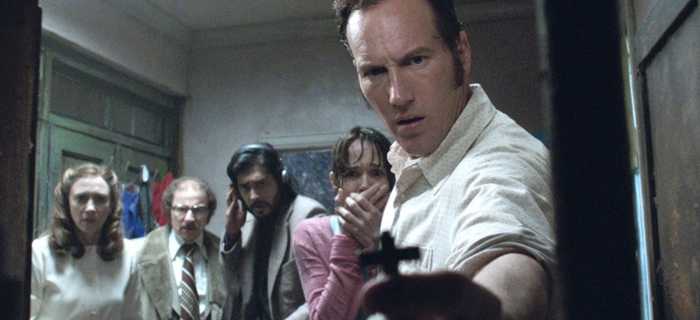
The oversimplification of The Conjuring’s religious narrative is easily exposed in its later films as well. In The Nun, the demon is attacked with Christ’s literal blood, preserved in a relic 13. In its sequel, with Saint Lucy’s preserved eyes 14. There’s no talk about whether anyone must actually believe in the power of these objects – their religious history is enough to make them weapons, regardless of the wielder’s faith.
In The Exorcist, Father Karras insists Regan’s affliction is psychiatric, and not demonic. He’s also undergoing his own crisis of faith – Pazuzu is triumphant when it realizes that Karras does not believe. Merrin goes so far as to say that the demon’s very goal is to make one ‘despair’ and lose faith. But there is never any questioning of faith in the Conjuring universe – everyone (regardless of characterization) wordlessly believes that God and demons are real, priests and nuns have supernatural ability, and religious artifacts possess massive power. It’s the kind of blind faith that exists when no nuance is given to the religious subtext whatsoever.
It’s easy to respond to the above with ‘So what?’ Faith is blind, after all. How does it matter if the Conjuring films place significant weight on objects and rituals with an uncomplicated religious fabric, instead of the characters’ internal conflict?
It matters because those conflicts and complications are what make a horror film. If everyone could evade demons and hauntings with duly performed rituals and preserved relics, what then do we have to be afraid of?
It matters because those conflicts and complications are what make a horror film. If everyone could evade demons and hauntings with duly performed rituals and preserved relics, what then do we have to be afraid of? It’s only a horror film when there are no easy solutions, and the characters must overcome challenges both internal and external to win.
This is the framework Annabelle: Creation is born into – one of oversimplified religious tones and an all powerful God. But this framework is not the only thing Sandberg’s film refutes – it goes further, refuting the idea of faith itself.
Sandberg’s Annabelle: Creation, Negating both Religion and Faith
On discovering the demon in Annabelle: Creation, Mrs Mullins faces it crucifix in one hand, Bible in the other 15. The demon is undeterred – it plucks out her eye in reply. So far so good – we expect that like in Fright Night, the second time the demon is approached with the crucifix (and this time with real faith), the process will work. But in Sandberg’s film, this arc is never completed.
The Mullins’ belief in crucifixes is not affected by the first incident – when Sam Mullins hears later that the demon has ‘awoken’ again, he gets to carving another cross. In a by now familiar horror sequence, he holds this cross out to the demon, warding it off. Only for an invisible presence to snap his fingers one by one until he drops the cross – and then kill him.
This incident does not just remove power from the religious object – it removes power from faith itself, meaning no matter how firmly the Mullins’ believe in God’s power, they cannot overcome this evil. Time and again the film’s characters resort to faith and religion, only to have the demon throw it back in their face. Sister Charlotte holds up her rosaries and prays aloud in Latin when confronted with the demon – in the very middle of these prayers she is lifted up and dashed against a wall.
In The Omen, Father Brennan is a corrupted priest now trying to repent. In his fear, he lives directly across from his church and covers his walls and windows with Bible verses and crucifixes 16. ‘He was clearly trying to keep something out’, a character remarks. Priests in The Omen do not inspire faith – they are all corrupt, and convinced they are going to hell. This one is killed off onscreen to chants of Ave Versus Christus, Ave Satani (Hail Antichrist, Hail Satan), while he clambers over gates and bangs the doors of his church in a most unpriestly manner. All his measures were futile, and he has no priestly authority – he was just as terrified as the rest of us.

Reminiscent of Brennan’s walls, the Mullins and their priest ‘locked away’ the evil Annabelle doll, covering the walls of its prison with Bible pages. Reminiscent even more of the futility of these measures, we find out that this locking away had never been successful. The demon always knew how to escape its prison – Bible verses no bar.
Unlike Father Brennan, however, the Mullins are neither convinced of their own damnation, nor have they committed crimes against God. They are devout Christians who go to Church, open up their home to a girls’ orphanage, and truly never seem to lose faith in God. Yet this staunch Christian faith does not save their souls – neither of them make it out of the film alive. What makes this so confusing is the fact that this film is part of the Conjuring universe – these rituals and symbols have always worked before – what fresh hell is this?
Tangible and Psychic Battlefields in Horror
Speaking of soul saving – Annabelle: Creation follows Leonetti’s Annabelle in the Conjuring universe. In Annabelle, the Devil comes looking for Mia’s newborn, and she is haunted throughout the film 17. Despite this, the film echoes the Bible when we are told that the Devil cannot take a soul unless it is offered. The plot is thus rooted in religious symbolism, and the battlefield is a psychic one.
This means that the struggle between Mia and the Devil is predicated on spiritual rules – such as the Devil requiring permission to take her child, or her physical injuries vanishing once the danger is past. Like the burn inflicted on Mia, which disappears under a bandage. This is a common device in horror, even if not always explicit: Dalton in Insidious recovers from his coma once the spirits are cleansed 18, and Regan’s injuries heal remarkably quick in The Exorcist. The underlying thought is that these injuries are as supernatural as that which causes them.
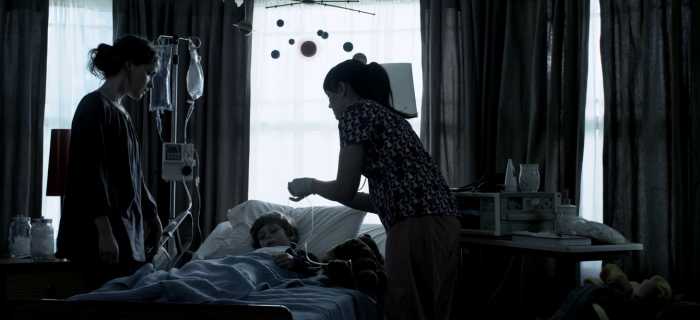
But Sandburg changes the battlefield into one more tangible (and so more real?) in his film – his demon snarls at the orphan Janice that it wants her soul, and then throws her down the stairs. Janice, already suffering from polio, is now wheelchair bound, making it all the more easy for the demon to corner her. Soon after, she’s flung into an abandoned shed, where the little demon girl pins her down and forcibly pushes its ‘evil’ down her throat.
The sequences are brutal and physical, as if Sandburg wants to underline this change in playing grounds – this film is different from the others, this demon does not require spiritual symbolism to commit its evil, and this demon breaks bones. Little Janice remains in the grip of evil even at the end – the virtuous innocent child who believes God will protect her never finds this protection.
The same Christian forums who welcomed most of The Conjuring movies recognize this as well – they warn their readers that the film sends a ‘dangerous message’ in its display of ineffectual faith, and wonder why the characters are pitted against an evil that seems ‘too powerful’ 19. Comments under YouTube videos of the film repeatedly mention how this is the first of the Conjuring universe to show brutal deaths.
The funny thing is, despite all this, religion is by no means absent from the film’s frame of reference. It is constantly present in images and dialogues, almost deceptive in the way it appears to offer a resolution to the haunting.
Not Just Negating, but Mocking the Religious Ethos
At first glance, Annabelle: Creation could be mistaken for a faith vs evil film – you see religious imagery everywhere: the stained glass windows and frequent cross motifs, confession scenes and constant references to souls and sins. But in reality, faith isn’t an asset for these characters – it’s an inhibitor.
Picture the premise:
In trying to contact their late daughter, the Mullins’ awaken an evil, and then lock it away using the word of God. Then they atone by bringing home six displaced orphans and the Nun who is their guardian.
So far so Christian.
But then it turns out the demon was never successfully locked away. What’s more, it’s now using these orphans to wreak havoc across the country. Could the chain of murders be prevented if the Mullins had felt a little less guilty for their sins? Could it have been stopped at the root had they not assumed Bible pages would contain a demonic presence in their closet?
Even beyond the primary plot, Christian discourse and frame of reference limits the characters, preventing them from ever effectively fighting the demon. Janice sees and converses with the demon, it chases and attacks her – and all she can tell Sister Charlotte is that she has ‘felt a presence’:
‘You say even though we can’t see God, we feel His presence. In this house, I feel a different kind of presence. A bad one.’

Would her life have been saved if she had spoken more clearly of her encounter? Would Sister Charlotte have been convinced to take her girls and flee? We don’t find out, because Janice can never articulate her experience without the religious rhetoric she has been raised in, and her words fall grossly inadequate.
In response, Charlotte reassures her with a response straight out of the Bible – ‘The Devil preys on those weak in faith, not weak in flesh and bone’. In believing her, Janice remains unprepared when the demon systematically weakens her physically by attacking her, until she is feeble enough to be taken over.
Not only does religion limit the ways in which the characters speak of the demon, it restricts their reactions as well: Sam Mullins is somewhat pathetic in the way he resorts to carving another cross, despite knowing that crucifixes have not deterred this demon before. The arsenal of religious weapons is limited, and in Annabelle: Creation, it falls short. This demon is not exorcised by symbols, and when characters hold up religious markers instead of running for their lives, it’s almost like the demon takes advantage of their naivety.
There’s also a sense of the characters never really understanding the stakes, or what they are up against – Mrs Mullins claims that the priests who sealed the evil away ‘saved her soul’, neglecting to acknowledge the fact that something much more immediate than her soul was threatened: her life.
Indeed at times the characters’ failure to accurately understand or respond to their situation seems frustrating – like Sam Mullins deliberately facing the demon with a crucifix, or Charlotte beginning to pray, instead of simply getting out. Comments under YouTube clips of Sam’s death are along the lines of:
“Him and his wife should have just repented alone” 20/ “Therapy would have been a safer option” 21/ “Annabelle’s face is like ‘Do you see the kind of idiots I have to deal with? Will they ever learn?’” 22
YouTube
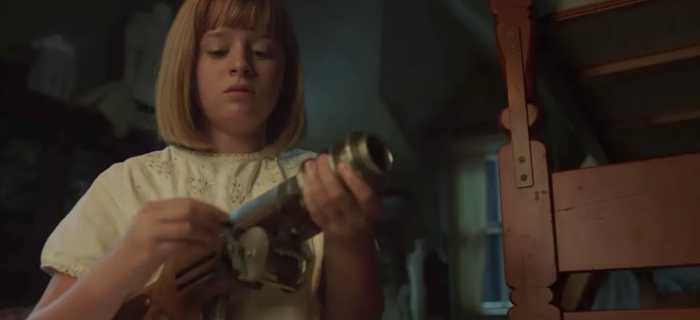
The only character who seems to have a rational response to the events is the young orphan Linda – Janice’s best friend. One night, she sits with a ball gun at her door, prepared to defend herself – but realizing soon that the demon is bigger and stronger than she imagined, Linda does what everyone else should have. She runs and hides.
Linda survives.
When seen in the context of the narratorial trend of the Conjuring universe, it is easy to read Sandberg’s work as building onto the religious structure that has been up by Wan’s films. In fact, a great deal of the reviews and essays that speak of the film have read it so – calling the film a “creation story” 23, at times going so far as to imply that it is “Christian propaganda” 24. These readings, however, beg the question, why was Annabelle: Creation put on hold in Lebanon for being potentially “offensive to Christian faith” 25? Little detail of what these offensive sequences were is available to the general public, but the censoring was largely overshadowed by Lebanon’s banning of Wonder Woman that same year.
It is possible Lebanon’s censors came to the same conclusion this article leads up to – that a closer analysis reveals this ‘Christian’ reading of Annabelle: Creation as flawed – not only is Sandberg denying Wan’s Catholic structure, but actively deriding it. The Conjuring universe has built its religious subtext into one that rewards ‘blind’ faith against all adversity. Sandberg’s film reverses this, almost indicating that the blindness of faith is exactly what renders it futile and meaningless.
The demon Malthus ‘mocks’ the crucifixion by murdering Mrs Mullins and hanging her up on a wall in the Christ pose. Annabelle: Creation similarly seems to mock the idea of a distant God overcoming all evil and saving the world.
Works Cited
- Barnes, Tyrone. “Best movies of the decade: 2010-2019”. Geeks Under Grace, ed. T. Hummel, 28 Dec. 2019, https://www.geeksundergrace.com/movies/best-movies-of-the-decade-2010-2019/. ↩
- Funaro, Vincent. “‘The Conjuring’ Review: A Demonic Scarefest with Christian Themes”. The Christian Post, 18 Jul. 2013, https://www.christianpost.com/news/the-conjuring-review-a-demonic-scarefest-with-christian-themes.html. ↩
- Daswick, Tyler. “Hear Me Out: Why ‘The Conjuring’ is a First-Class Faith Movie”. Relevant, 19 Jul. 2018, https://relevantmagazine.com/culture/movies/hear-me-out-why-the-conjuring-is-a-first-class-faith-movie/. ↩
- Night of the Living Dead. Directed by George Romero. Continental Distributing, 1968. ↩
- Village of the Damned. Directed by Wolf Rilla. Metro-Goldwyn-Mayer, 1960. ↩
- The Exorcist. Directed by William Friedkin. Warner Bros. Pictures, 1973. ↩
- Fright Night. Directed by Tom Holland. Columbia Pictures, 1985. ↩
- The Wicker Man. Directed by Robin Hardy. British Lion Films, 1973. ↩
- Sinister. Directed by Scott Derrickson. Lionsgate Films, 2012. ↩
- The Conjuring. Directed by James Wan. Warner Bros. Pictures, 2013. ↩
- Holland, Tom. “you have to have faith for that to work”. YouTube, uploaded by Damien Nightwalker, 15 Mar. 2015, https://www.youtube.com/watch?v=-J9VEBREa68. ↩
- The Conjuring 2. Directed by James Wan. Warner Bros. Pictures, 2016. ↩
- The Nun. Directed by Corin Hardy. Warner Bros. Pictures, 2018. ↩
- The Nun II. Directed by Michale Chaves. Warner Bros. Pictures, 2023. ↩
- Annabelle: Creation. Directed by David Sadberg. Warner Bros. Pictures, 2017. ↩
- The Omen. Directed by Richard Donner. 20th Century Fox, 1976. ↩
- Annabelle. Directed by John R. Leonetti. Warner Bros. Pictures, 2014. ↩
- Insidious. Directed by James Wan. FilmDistrict, 2011. ↩
- Purcell, Julianna. “Review: Annabelle:Creation”. Geeks Under Grace. Geeksundergrace.com, August 2017. Web. ↩
- Timebomb4562. Comment on “Annabelle: Creation (2017) – Sam’s Death Scene (6/10) | Movieclips”. YouTube, 2022, https://www.youtube.com/watch?v=NbVn5FuMR1s. ↩
- Basketcas3717. Comment on “Annabelle: Creation (2017) – Sam’s Death Scene (6/10) | Movieclips”. YouTube, 2022, https://www.youtube.com/watch?v=NbVn5FuMR1s. ↩
- Nkondilis1997. Comment on “Annabelle: Creation (2017) – Sam’s Death Scene (6/10) | Movieclips”. YouTube, 2022, https://www.youtube.com/watch?v=NbVn5FuMR1s. ↩
- Gravino, Neil. “The Christian Worldview of Annabelle:Creation”. Horror Homeroom. Horrorhomeroom.com, August 2020. Web. ↩
- Symmonds, Nicole. “Annabelle:Creation: A Creation Story for Catholic Secret Keeping?”. Sacred Matters Magazine. sacredmattersmagazine.com. Web. ↩
- Goodfellow, Melanie. “Lebanese Censors stop Annabelle:Creation release”. Screen Daily. screendaily.com, August 2017. Web. ↩
What do you think? Leave a comment.











The little girl playing Annabelle was superb, a very understated performance.
Agreed!
Annabelle is far better than the previous film and Conjuring 2. Very effective horror. Good atmospheric use of sound and light (or lack there of).
Hard agree. I still lose sleep when I rewatch it (I’ve seen it multiple times).
My favorite part was when Loraine said Satanists are stronger at night. It was a funny and unexpected piece of information that made my wife and me laugh. Now, we use it like a random joke, similar to a “that’s what she said” moment.
There’s so much random far fetched trivia that’s thrown out with a completely straight face in these films – Saint Lucy’s eyes is a gag I’m still not over.
Could be in reference to the witching hour. It’s common folklore that witches do their magic by the light of the moon.
that was a very funny part, and kinda tells you all you need to know about the whole franchise
I once heard this franchise referred to as the Christian Avengers…I’d say that’s about right, except way more hacky.
Sounds accurate – weilding crucifixes like guns.
Well I mean, Ed and Lorraine Warren are real people who actually existed and they were Christian spiritualists. So… yeah?
Shitty scammers are superheroes because Catholicism.
Ed and Lorraine Warren were fascinating people with amazing lives. It’s just a bit disappointing that Hollywood added a lot of untrue things, especially in the second movie about the Enfield haunting. But I guess they did it to make the movies more popular, so I can’t be too mad. In the end, the Warrens are impressive because they fooled a lot of people. I really wish I could see the Warrens’ collection, especially the ragdoll. The whole idea of cursed artifacts might be nonsense, but I think it would have a cool vibe there.
I’m not sure a faithful representation would have made a convincing case for the veracity of Ed and Lorraine’s claims. As you point out, their careers were based on fooling a lot of people.
Hereditary is a great example of a movie that plays with the same source, but treats it from a more mythic angle, and is actually terrifying and well made.
Loved Annabelle Creation. A cast of predominantly orphan girls gave an interesting narrative and perspective. It reminded me almost of a baby The Descent cast.
What do you all think?
I thought it was really disappointing. I don’t think there’s enough to Annabelle to give her a stand alone film, let alone a sequel. It was full of cliches; cupboards that you’re warned not to go in, rooms you’re warned not to go in, possessed children, possessed children who’s joint snap and crack. It added nothing to the genre. A few plot holes and we have yet another cheap cash grab!
Personally for me what I loved about Annabelle: Creation was how it took all these cliche tropes and turned them on their head. That’s what made it scary for me.
My only real issue with the movie was the well scene. I thought the film up until that point (and Lights Out) was able to avoid dumb character decisions. But the scene kind of stuck out to me as being something out of a less intelligent film. Though I’m not a little girl going through a traumatic experience, and since it’s the only instance I feel a logic is lacking, I mostly give the movie a pass on that scene.
The well scene is one of the ones I was never really happy with because I didn’t have enough time to do it properly.
I enjoyed it but can’t understand why i didn’t like it more. Honestly, I was tired by the end. I didn’t feel any sense of danger to anybody once it got humming because I think I saw too many scares along the way. There were some very beautiful shots (like the diving shot from the church in the beginning) and the horror was creepy.
I LOVED that diving shot at the church. Very unique especially for the genre.
The scares and tone were great but it couldn’t connect with me. Still enjoyed it and it was very well made but it was missing something for me.
Just watched the movie and it was so scary! I would say that it is the scariest among the Conjuring series. There’s no exorcist coming for her, it’s just the orphans + nun VS the demon.
While it was pretty scary, I found the dialogue pretty cheesy, and the story was pretty cliche and forgettable. Still, the amazing visuals and scenery stands out and redeems it. It is just not very original.
I will be banning dolls from my future house.
For me the film titles sounds more like a video game but that should hardly stop anyone watching the films.
The Conjuring was excellent, what followed did the original a disservice.
These Insidious, The Conjuring, Annabelle movies are absolutely dreadful. I love them.
Me too. Silly horror is a guilty pleasure.
Yeah, but I’m always a little disappointed when good trash becomes just trash
the 3rd Insidious being an obvious example. i dobbed my pants when red dude turned up the first one, and pissed myself (mercifully in both cases, metaphorically) laughing when he rocked up in the 3rd movie like a camp CBBs trick or treater
still, both entertaining in their way i guess
Ya, the first Insidious was pretty impressive. Scary even. That doesn’t happen often.
I honestly can’t stand that exorcist couple who are so legendarily known for being fuckin scam artists. They are so good at manipulating the public eye that they’ve ended up in numerous documentaries and movies. They are living proof that you could be a liar and people in a religious setting will believe anything you spew if it’s Scary enough.
You hardly need to look as far as Ed and Lorraine Warren to find liing proof of that.
I’ll always remember watching The Conjuring with my family (they’re all really into Christianity), and I couldn’t stand all the Christian stuff in the movie. The opening line before the credits made me want to gag. After that, I learned about the real-life Warrens and how they were big liars, which made me hate the movie even more.
Christianity and horror do kind of make a good combination. But I would like to see one where it showcases the horrors of Christianity.
St. Maud and Apostle are other good ones. Midnight Mass is fantastic as well.
I LOVED The Conjuring, but am I the only one who feels like they haven’t really done much with the formula? It’s all the same sort of scares and tension building that doesn’t pay off for me anymore. I know it’s a franchise at the end of the day but I’d love them to be daring with it. I felt safe watching a horror film. What’s that all about?
I watched the first Annabelle and was pretty unimpressed, but 2nd was a really enjoyable watch!
Thank you so much for the articles. I appreciate and enjoy every article ❤️
This article was thoughtful. I tend to avoid horror but this article gives this horror content depth. Reading this was eye-opening.
Thank you! This is such a huge compliment. 🙂
I’ve always found that horror is a treasure trove of social and cultural commentary.
I like that the demon actually straight up murdered some people in annabelle. I also love how brutal it was. We got to see the dads hand get destroyed then his soul taken. Then we see the moms remains nailed to the wall like jesus, then later we see her crawling around. One thing that bothered me about the other conjuring movies was that there was no real consequence to any of the haunting besides the odd demonic levitation throw.
Yes – this is possibly the first of the Conjuring movies to have physical and permanent consequences of the haunting.
The conjuring tried to seem real, which makes it scarier. But it’s not okay that they showed innocent people in witch hunts as if they were bad. It bothers me that a movie, which is usually good, tells untrue things and tries to make real-life scary things seem okay.
Yes, I also felt bothered by the problematic messaging of the victims of the Salem witch hunts being actual witches.
To me the worst thing about “Annabelle” was the sort of mild things going on in the face of real power and evil. Why all the games unless we are just trying to drag the movie time out.
But what’s a horror movie without scares?
I didn’t bother with the first ‘Annabelle’ but liked the second one.
I love supernatural horror movies, but so many of them are obnoxiously, deeply Christian. The Conjuring movies are especially bad on that front.
Agreed.
Thanks. I’m not surprised that’s the situation, but I hope more people would talk about how most American horror is still very Christian, especially from an evangelical/fundamentalist Christian perspective. If a story is based on religion, I’d prefer it to be more inclusive like John Constantine or something similar.
I only saw the first one. It left absolutely no impact. I don’t get the appeal of these movies.
They’re fun to watch, so I just take them with a grain of salt.
I think the source material from Ed and Lorrane Warren also revolves strongly around these themes – especially since we don’t see Christian messaging in Wan’s previous work.
I’m a practicing Christian who doesn’t partake much if at all in horror. I know my own mind and triggers, and 9 times out of 10, we don’t mix. That said, the blending and grounding of horror with/in Christianity is a fascinating topic for me. Thanks for taking the time to address it.
Literally the only genuinely frightening film in the universe.
The article is amazing.
Amazing article. Makes us think on a different level!
Kudos to the writer. ✍️